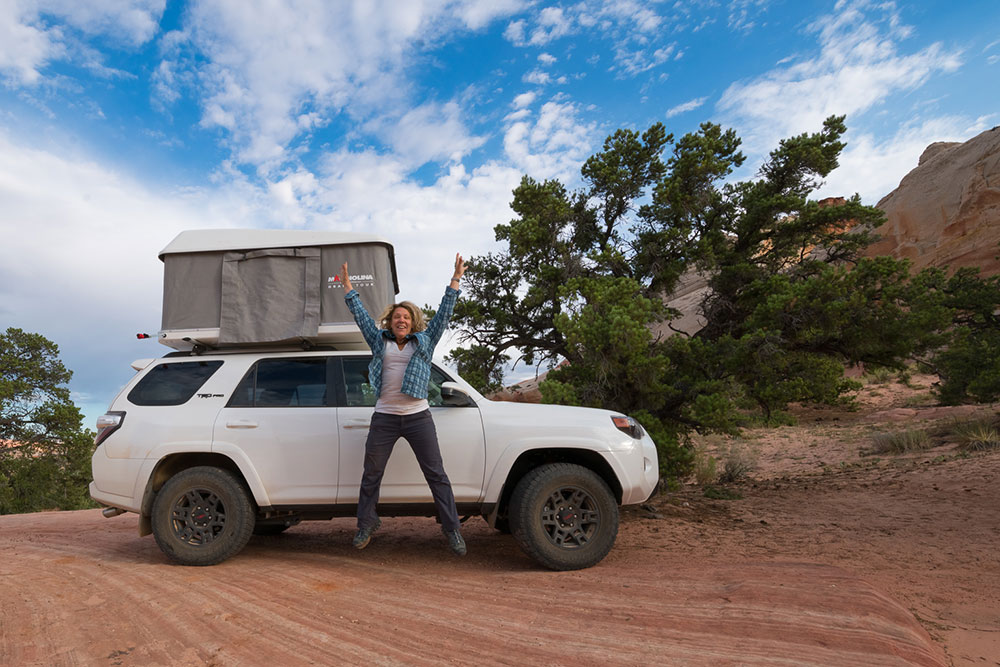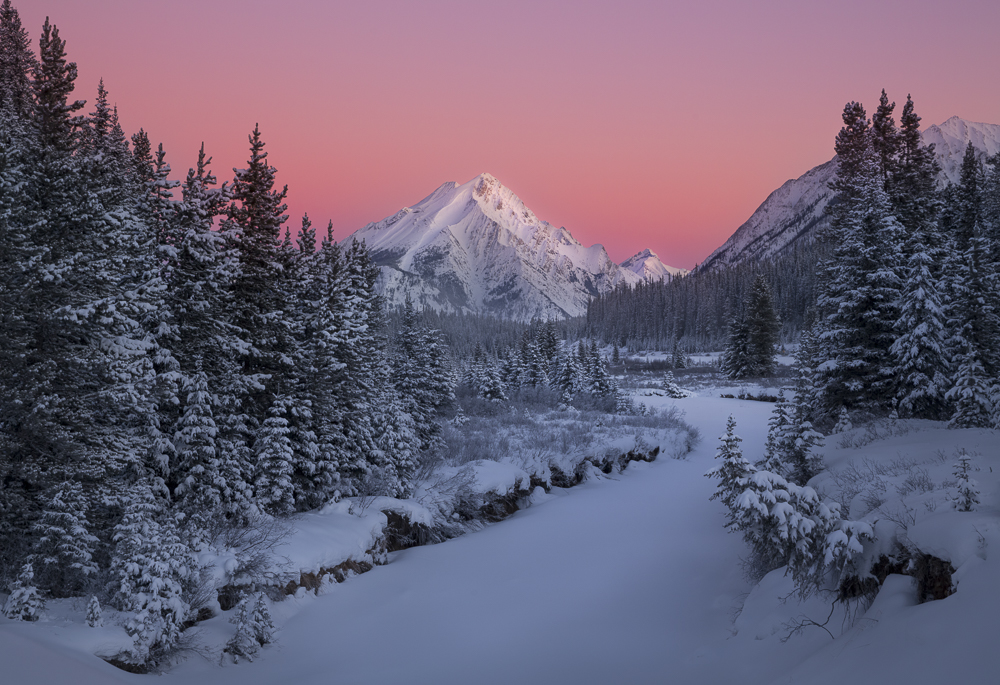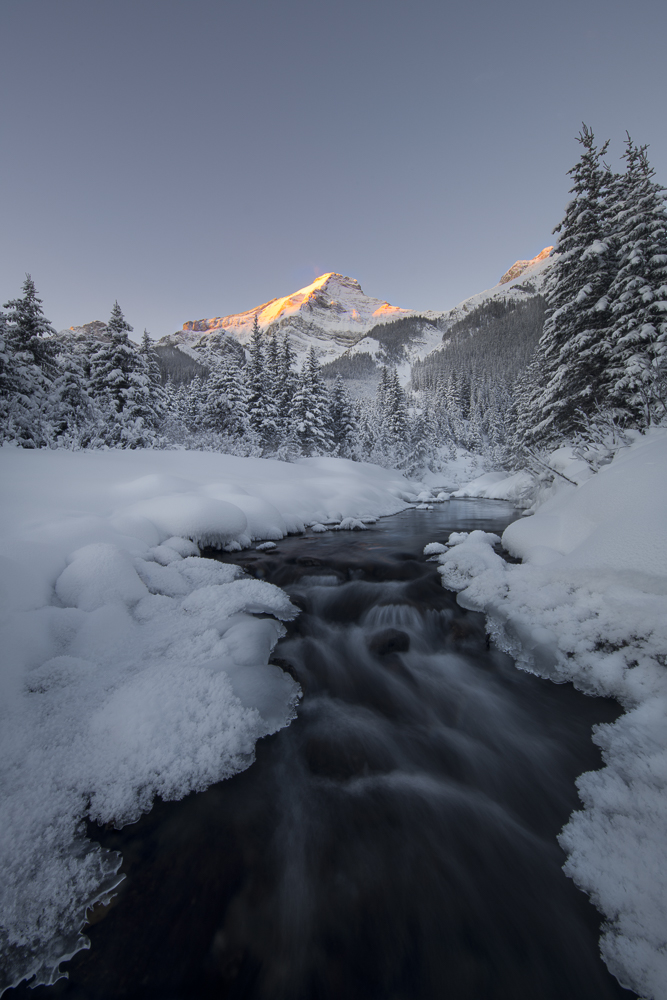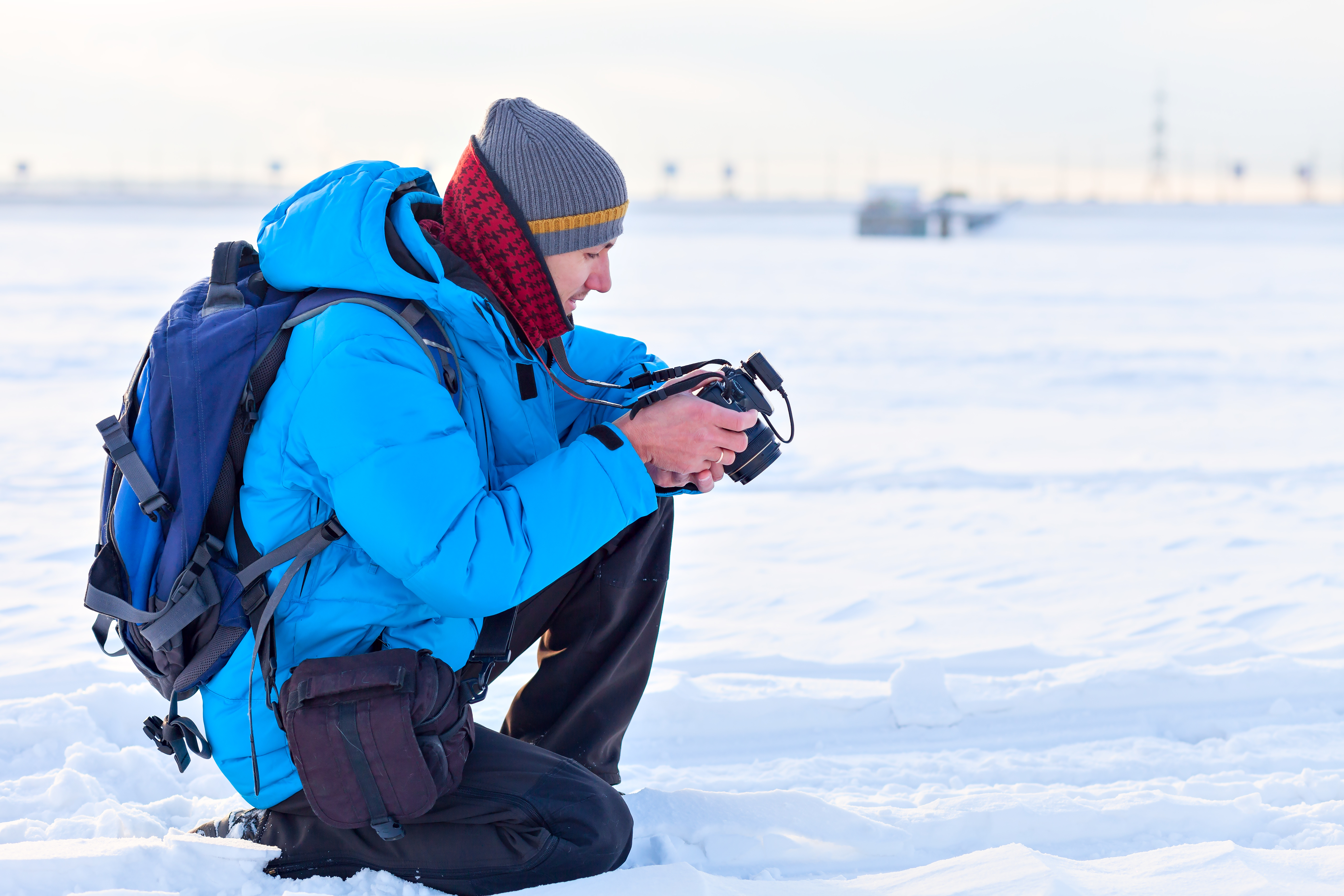I promised myself I would go to the nail salon to have a pedicure with hot wax the moment I stepped into the frigid stream and discovered my boots were not waterproof as advertised. Getting one’s feet wet to get the shot is not usually a big deal, but at -34ºC, wet feet was not good. Preparing for the trip to the Canadian Rockies in January centered on getting camera gear, extra batteries, many layers, socks and warm boots packed. Preparing for photographing in the cold is one thing… dealing with it and the consequences is another.
While my photography friends and I were removing multiple layers of clothes for dinner I looked over at my new friend and noticed that he had blisters on his fingertips! “Oh my gosh! You have frostbite!” Usually this is accompanied by pain, but he did not feel any pain until pulling his glove off, and in fact had decreased sensation in most of his fingertips.
Usually the first symptoms of frostbite are in the digits and tip of nose. This could be painful digits that progress to numbness or tingling. Once sensation is gone this is a sign that frostbite may have developed.
Ways to prevent frostbite include starting with appropriate layers, Arctic-rated boots, wearing thick, warm socks, and/or using hand/toe warmers. Moving around to keep your blood circulating helps to prevent frostbite especially if standing while awaiting sunrise. Jumping jacks and squats are personal favorites. It is important to look at your digits if they become numb to check for whitened/pale skin, blisters, or blackened skin. If one notes any of these signs or symptoms get out of the cold environment immediately.
Re-warming techniques include removing the cold, or wet clothing, and gently rewarming in warm but NOT hot water. Do not vigorously rub the cold skin. If blisters are present try to leave them intact and go to your nearest Emergency Department. If a Burn Center is available this would be ideal. Expect to have your tetanus updated, blisters may or may not be removed and to have bandages placed. Antibiotics may be started to prevent infection. And certainly DO NOT go back into the cold!
The healing process can take 10 days to two weeks and at this time one can determine if the frostbit tissue will return to normal or whether it will become ischemic and die (finger-tip amputation). One of the most crucial aspects of healing is to prevent infection.
Frostbite is preventable as long as you pay attention to your extremities and check them occasionally. If you are having difficulty staying warm despite multiple layers, hand/toe-warmers and rewarming techniques get out of the cold and get warm. No photograph is worth losing fingers or toes.
Do you have any winter travel tips or winter photography spots? Please share with us in the comments.

About the author: Seattle-based photographer and Emergency Physician Jennelle Marcereau travels the globe to capture landscapes that remind one to slow down and appreciate the splendor of nature. See more of her work at www.jennellemarcereau.com.




Mittens are warmer than gloves. If you are waiting for a shot put you warm ish latex mittens on then change to winterized photography gloves when you are ready to shot
All great comments. I need camera advice for super cold. Am in Alaska to shoot Northern lights. Sony a7iii rated only down to 32F. I had been assured it would be fine at colder temps. Went out on a shoot last night. Yurt was a great warming hut. However, it was -13 outside. Took a few shots. Camera froze up. Could not change f-stop or ISO outdoors. Remote shutter did not work. Shutter button did nothing. If I turned camera off and then on, it clicked on its own and took 1 shot. I did that 3-4 times (15 second shutter speed), went in and waited for camera to warm up. Scared I had ruined my camera! After it warmed up, I got to menu, turned the monitor screen off, went out again. Repeated the off/on/ photo process again a few times, got some decent shots, went in, warmed up camera—about 15 minutes—and called it a night. Aurora had faded away and our group agreed our 2-hour junket was fun and it was time to return to hotel, satisfied we had all we were going to get and happy with that. Camera seems fine. I don’t expect to be in such cold again, so I guess we survived, my beloved camera and I. It is not accompanying me dog-sledding or on a glacier hike, however. Too bulky. Not pushing my luck!
I recently returned from The Tetons National Park. Fingers are very difficult because as noted, gloves interfere with camera operation. I have yet to find a great solution, but electric (battery supplied) muffs may be the answer. I did wear a heated vest and heated socks that kept me toasty otherwise. I also found that a good quality rain suit helped because it was light weight and was wind resistant, the perfect outer layer. Appreciated your article and great pics.
I have lived all my life in Canada where it sometimes drops to -40C. I have even experienced -55C. I do all kinds of outdoor activities in the winter and have learned to deal with cold so it does not get in the way of enjoying my time outside. Know your body ,My knees and ring fingers tend to get cold . I wear up to 5 layers on my legs . For me I find mittens with soft leather outers and removable wool liners work best to keep my hands warm. I buy mittens that are flexible enough to do most operations on my camera with them on. For temperatures down to -8C I wear soft leather ropers gloves which allow me to do what I need to do with them on . I plan my shoots and preset the camera as much as possible before going outside.I try to stay ahead of the cold and wear what is necessary . If you wait until you feel cold you never catch up. Clothing needed depends a lot on your activity level. If you have a hike to your photo local and are over dressed you will sweat .Wet clothes just don't work. For my feet I have a good pair of winter boots. To keep them dry I take them off immediately after coming in. Standing in slush or shallow water will cool your feet quickly. If you can get off the cold surface with something like a board or a mat. For my core body I dress in layers and adjust based on activity and cold. For my head and neck I wear a heavy cap with ear covering and use a hood if it is really cold or windy. Breath through your nose if possible as that conserves heat and keeps from burning your lungs. For me I need regular small snacks and warm drinks to keep my blood sugar up .For frostbite the best advice is to try to avoid it by dressing well especially extremities. Keep your hands ,fingers and toes moving so blood keeps moving and so you can sense when they are getting cold . Move your face and nose for the same reason. If you feel cold do something about it before it freezes. Frozen toes,fingers etc are a big deal .
good thing you cant feel frostbite, it looks like it would be terribly painful if there was full sensation. My dad always used hand warmers that use lighter fluid, idk if they even make them anymore, but there are other options. Mittens are warmer for skiiers, with a liner that you can pull out or flip out of easily to operate the camera, and back in the mittens with hand warmers. Its also imperative to wear a neoprene face mask in extreme conditions, and a neck warmer of sorts to stop any wind leaks up sleeves or down the neck. Frequent checks (q 20min) is a good idea for hands and face. Wet feet is not good, and impossible to warm back up till they are changed into dry ones.
here in the uk it never gets below 10c. the problem here is the rain,if out at a set location the goto item is a small fishing tent , throw on the ground and it pops up,,saved me [drowning] many times..can be picked up on ebay for $25
Which brand of boots do you recommend? I can't find a pair that keep my feet warm!
Do you do anything physically to prepare before going into the cold and can you recommend clothing and boot companies that you found worked appropriately for such cold temps. BEAUTIFUL photos
Love seeing the photos...used to do some work in forensics, training programs, portraits and other work but haven't done much lately...getting too old to get cold, hot and probably just plain lazy! ;-) Your work has inspired me to get going again...thanks so much for sharing... you do such wonderful work...
I was hoping for information on how to prevent camera damage during winter and rainy fall adventures. I struggled with my photography during the Iditarod and Fall hunting.